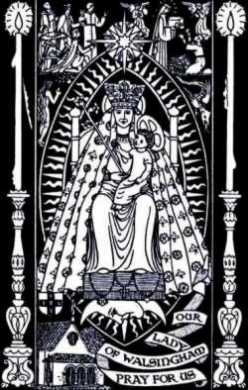
The paschal candle stand in the design of a menorah, the seven-branched candelabrum, one of the oldest symbols of the Jewish people and used in the Holy Temple in Jerusalem.

Window depicting Saint Ignatius of Loyola.

Clay statue of St Winefride outside the chapel. St Beuno was St Winefride's Uncle.



The processional Crucifix and Presidents chair with the tabernacle in the background. 

Beautiful angel.
St Beuno's was born around AD 545. He founded his own community and performed numerous miracles, among them, restoring St. Winifred's head after she was beheaded. He seems to have been an effective preacher who evangelised much of North Wales and founded a monastery at Clynnog Fawr (Carnavonshire). His feast day is April 21st.
The main Chapel was re-ordered in the mid 1990's. It has suspended from its roof, a calico four ended tent structure that is secured to the posts. Although it is not to my personal taste, it has the effect of making the 'space' homely and cosy. I'm not quite sure if a chapel should promote those particular feelings but there we are. The Apostle Peter compared his body to a tent. "Yes, I think it is right, as long as I am in this tent, to stir you up by reminding you, knowing that shortly I must put off my tent, just as our Lord Jesus Christ showed me" (2 Peter 1:13-14). Tents are symbolic of our earthly pilgrimage and our journey towards the risen Saviour, and symbolic to retreatents during their time at St Beuno's.
The altar is a round slate structure, westwards facing and a beautiful tabernacle made out of an old window which looks spectacular when the daylight shines through it.
'Then I will go to the altar of God, To God my exceeding joy; And upon the lyre I shall praise You, O God, my God'. Psalm 43:4
Signed: Christopher McGuinness.




_Black_s_s_s_s_s.jpg)
